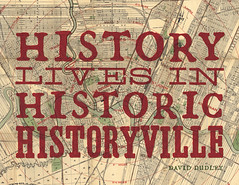We’re continuing our website critique series today with Trisha’s blog, WORD+STUFF. Hi, Trisha!
Content & Navigation
One of your strong points is your topic and content. I like that you have your blog as a place to talk about writing, but you’re free to do more than that. You’re more than just a writer, and your various topics show that.
I like how you have social media links in sidebar. You could highlight them just a touch more with a header for that section that’s a call to action—Connect with me or something similar.
However, those shouldn’t be the only way a visitor can contact you. I always advise a contact form on your website!
On your Projects page, I like the way you let us know the story behind the projects, but a little more info about the projects themselves might help to hook us better. (This may not be a big issue if you’re not pursuing publication on some of your older works.) Also, the link to the excerpts doesn’t work (you need to capitalize Excerpts in the link). If any of the excerpts correlate with the projects you list here, consider linking directly to those excerpts in the description of your book.
Design
The eclectic design seems to reflect your tastes, but you might consider something that relates a little more directly to your blog’s topic and theme—and that of your writing, if you have a genre or subject area that interests you most. I’m not clear whether the art in the background is yours. Maybe you could explain this on your about page, and talk a little about your art. Your Art page could explore this further, talking about your training, media, inspirations, etc.
Search Engine Presence
As far as your search engine presence goes . . . well, it’s really hard to say, since you don’t use your last name on your site. I understand concern for your privacy, but if you’re selling your brand (and you are your brand), it helps to actually have that on your site. You’re not Google-able without it. (I did try searching for Trisha, just in case you’re actually a super-famous one-named artist in Australia, but no luck yet.) If you’re going to use a pen name, you might think about branding that now, too.
Good luck!
What do you think? Is your blog topic broad enough?







 )
)